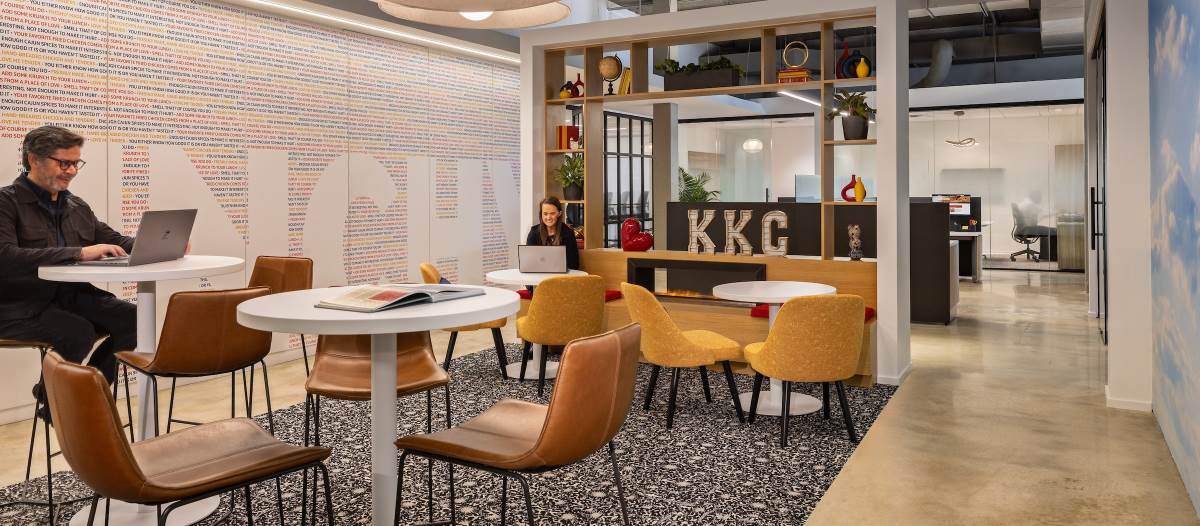The Office 3.0
Is the metaverse the future of the workplace?

The new generation of office space
While lockdowns are dragging on in some countries (tech giants are still delaying returning to their offices), some companies are solving these problems by joining forces in the metaverse. In July, Mark Zuckerberg told journalists that Facebook will develop the metaverse. The employees of Supersocial, a virtual experience developer, already spend most of their work time in the metaverse. Therefore, it was logical for the company to build a virtual office in 2021.
Both fully remote and traditional in-office options have their pros and cons. No wonder there are two groups of employees and companies opposing remote and on-site ways of working. Moreover, neither option entirely meets the current needs of employees and businesses. The solution is even closer than once thought.
The adoption of the metaverse technology recently was boosted in a lot of industries. Workspace management is not an exception. For example, journalists at the esports news site Upcomer created a virtual employee lounge in the Minecraft video game after the company began working remotely in April.
The main idea of the metaverse is the integration of the digital and physical world — workspace in this case. It can help to combine advantages from both offline office and remote work.
How metaverse technologies transform the workspace
The growth of the metaverse as a workspace is changing the very concept of the worker. This is already happening in companies built for the metaverse and is likely to continue as virtual and physical space converge. Jobs are becoming more accessible, as well as professions and positions that were once not suitable due to geographic location, culture or age.
Working in the online world provides employees with a variety of places and ways to work; a normal cubicle will be a thing of the past. The workspace within the metaverse will be free from hazards, dangerous risks and pandemics.
Metaverse offices will be freed from the disadvantages inherent in traditional and remote offices:
-
Distractions in the office space
-
Hard-to-manage social distancing
-
Meeting delays
-
Long onboarding
The metaverse model in the workspace can function because of the following technologies.
XR (Extended reality)
Extended reality is the entire completeness of technologies and solutions united by the previously established definitions of virtual reality (VR) and augmented reality (AR). Thus, the ability of these technologies to expand the boundaries of the physical world through the capabilities of digital tools for working with human perception is emphasized.
The XR plays the role of a means of transferring a person outside the place of actual location into artificially created worlds. The line between physical and digital worlds is narrowing - people are on the verge of a new era, in which a new kind of reality will be created, where the present and all future generations will have to live and work.
With augmented and virtual realities technologies companies can:
-
extend working space (adds extra content and objects, such as AR content about equipment and how to use it, virtual prototype models, etc.)
-
digitize wayfinding signs (in-app signs, transfer of offline pointers to the application, and opportunity to adapt and localize content)
-
simplify onboarding process (new employees can interact with AR content instead of asking mentors)
-
help to create virtual training sessions
-
increase employees’ engagement in meetings (high-level visualization — AR/VR demonstration of presentations, prototypes, connecting remote employees in a more interactive mode)
-
engage on-site and remote team members
Now companies of different sizes and various industries are starting to use the metaverse as a virtual space organizing VR work events, including meetings and conferences.
Digital twins
The digital twin is a virtual analogue of a real object, a computer model that duplicates its key characteristics and can reproduce its states under different conditions. In the case of the workspace, it can provide a detailed interactive map of the office space.
Digital twin technology can enhance maintenance (the detailed plan of the building, control over the damage sites, risk management, etc.) and enable companies to integrate indoor navigation technologies and to place AR/VR content with high accuracy.
Integration of systems allows to exchange data and analyze the behavior of an object and the processes occurring in it in real-time — to monitor the dynamic change of the digital twin under the influence of various factors.
The synergy of all building systems gives the maintenance service full access to documentation for equipment, materials and technical solutions that were developed at the design stage and implemented at the facility. This provides a quick analysis of a particular situation that has arisen, facilitates the search for equipment associated with a malfunction, and speeds up the restoration of normal operation.
Indoor navigation
Competent indoor navigation in offices helps employees and visitors build optimal travel routes so that even at the first visit to the site, they can quickly get to the desired point. A high-quality search system helps to accurately navigate the building.
Indoor navigation minimizes distraction as employees won’t need to ask for directions to offices, conference rooms, equipment, etc. It also supports social distancing efforts by minimizing unnecessary contact.
In a huge multi-level office and/or multi-building campus, it helps to find a way to the right meeting room easily and reduces tardiness. Indoor navigation technology can lessen office managers’ daily tasks, as they do not need to direct contractors through the office or accompany new employees on an office tour.
Some companies completely recreate their office in digital format so that remote employees can walk, communicate and meet colleagues, albeit virtually. Internal navigation technology helps them avoid getting lost in the digital office.
Artificial intelligence analytics
Artificial intelligence (AI) plays a vital role in XR and indoor navigation. Augmented reality apps are becoming more powerful with AI that learns the context and understands what the user wants. In 2021, through new applications and developments, these technologies create a unique and immersive experience. For example, AI analytics improve the placement of wayfinding XR content.
It is impossible to imagine the existence of the metaverse without artificial intelligence. With the help of AI, analytics become deeper and more detailed. It tracks employees' routes and helps to analyze their performance; it identifies crowded areas and the intensity of human traffic in the office. For example, an extra coffeemaker or copy machine, or an additional breakroom or library can be added to minimize crowds in the office and improve the plan of each floor.Conclusion
Imagine an employee who works from home but has a digital twin office. With the help of metaverse, he or she will be in the same space with colleagues, without leaving the house. The employee will be able to share documents by simply showing them on a common screen, and the number of these screens is not limited. In addition, remote work with metaverse technology is becoming a safer and more productive option for employees who work offline in the office.
COVID-19 completely changed the way people work. Workspace management is now focused on the core issue — the symbiosis of a digital and offline office, both convenient and pleasant for the employee to work, communicate with colleagues and deliver business results.
Despite some controversial and fantastic nature of this term, it is safe to say that metaverse is the future of the workspace. The nearest future, looking at its fast development. For companies returning to the office, embracing metaverse technologies would minimize stress and speed up the process.

Vitaliy Goncharuk is the founder and CEO of Augmented Pixels Inc., with deep expertise in the metaverse, spatial localization, AR navigation and 3D map crowdsourcing. For more than a decade, he has developed and leveraged unique metaverse navigation technologies into facility management, construction, retail and other industries. Goncharuk is a founding member of Oper AR Cloud, and OGC (Open Geospatial Consortium), an official member of The Ad hoc Committee on Artificial Intelligence.
Read more on Workplace , Occupancy & Human Factors and Technology
Explore All FMJ Topics









